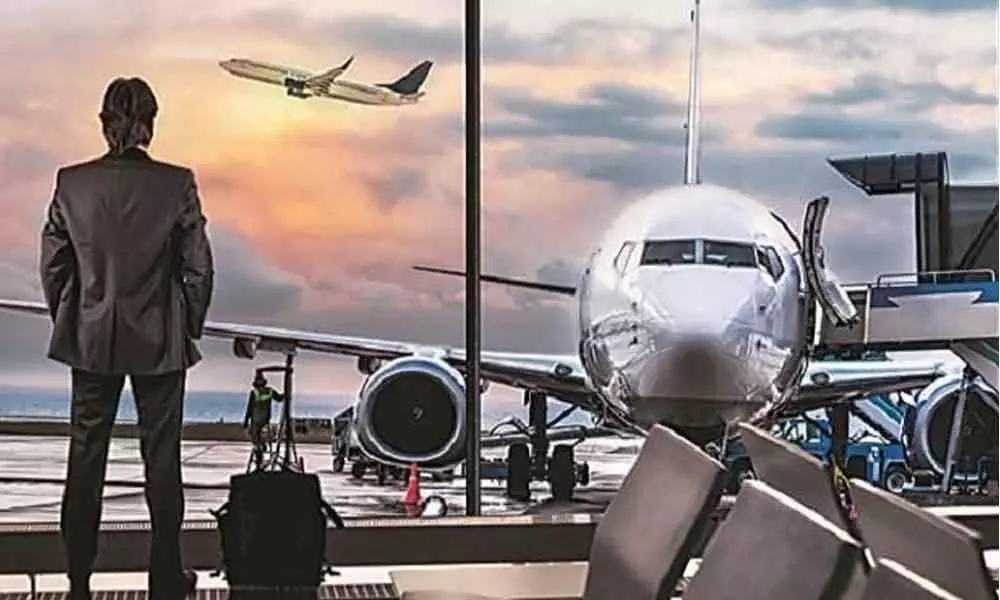Oil price rise worries airlines as aviation fuel demand picks up
Prices returned to about $70 per barrel by mid-August 2021 as key domestic aviation markets started to improve
image for illustrative purpose

A sharp fall in demand for aviation fuel saw the industry bill go down from $186 billion in 2019 to just $78 billion in 2020. Supplies built up and fixed and floating storage facilities were quickly filled. This caused a price drop and May 2020 futures contracts for WTI crude actually hit a negative rate.
But this proved temporary. Prices returned to about $70 per barrel by mid-August 2021 as key domestic aviation markets started to improve.
Even so, Sustainable Aviation Fuel (SAF) - the future of the aviation fuel market - remains considerably more expensive than conventional fuel. SAF are an extremely effective tool for reducing CO2 emissions.
They are a proven technology and delivered as a drop-in solution, meaning that they are blended into conventional fuel outside the airport and thus require no additional infrastructure.
Nevertheless, insufficient supply and high prices mean that SAF uplift has been just a small fraction of the 0.1 per cent of total fuel volume that airlines would consume in a normal year.
SAF need governments' support to scale up production and bring down the price. Airlines are striving to reduce emissions but also coming out of the biggest crisis ever with empty coffers.
Despite this, in Europe, the 'Fit for 55' package proposes additional fuel taxes for intra-European flights that could have a massive impact on all future fuel prices and will certainly increase costs for airlines. IATA opposes fuel taxes to solve environmental concerns and instead emphasizes the need for governments to promote the rollout of SAF.
"Aviation is committed to decarbonization as a global industry," says Willie Walsh, IATA's Director General. "We don't need persuading, or punitive measures like taxes to motivate change.
In fact, taxes siphon money from the industry that could support emissions' reducing investments in fleet renewal and clean technologies. To reduce emissions, we need governments to implement a constructive policy framework that, most immediately, focuses on production incentives for SAF and delivering the Single European Sky."
Fit for 55 proposes a mandate to increase SAF utilization to 2 per cent of jet fuel use by 2025 and at least 5 per cent by 2030. It does not, however, suggest any specific measures to reduce SAF costs.
The industry's pandemic-induced financial struggles are even affecting airlines' ability to manage conventional jet fuel. "Hedging requires a reasonably safe forecast of volumes and credit lines with the banks," says Alexander Kueper, IATA's Director, Fuel.
"Both are a challenge at present for some airlines, which makes is extremely difficult for them to protect themselves against price increases through hedging."
As it stands, the outlook for the fuel market is aligned with the recovery of air travel. Although domestic traffic looks strong, international travel presents a more complicated picture.
Fuel for international travel made up around 65 per cent of total fuel used pre-Covid-19, so demand is expected to remain unpredictable for the foreseeable future. Some refiners have even raised diesel production. It remains to be seen how many of them will switch back to jet fuel once demand returns. Any hesitation could become a challenge for the restart.
To ease the implementation of digital solutions, the IATA Fuel Data Standards Group (FDSG) has already incorporated the use of digital signatures for compliance with diverse local regulations.
At Boston Logan Airport, i6, a startup in the JetBlue Technology Ventures portfolio, has implemented its full suite of tools to aid the refueling process for the entire fuel supply chain.
"Our technology provides a comprehensive platform for the into-plane operator so that they can better plan, allocate, and track the entire refueling process," says Steve Uhrmacher, CEO, i6 Group. "This includes the moment that the fuel order is first placed through to post-event reconciliation."
Uhrmacher believes a digital process can save several minutes in every refuel, which he describes as a "game-changer" for an industry where delayed flights can mean thousands of dollars in lost revenue. Moreover, more accurate data transmission reduces the risk of over-fueling by 50 per cent, cutting the initial cost of fuel and aircraft weight, a notable factor in subsequent fuel use.
How the various factors affecting fuel will play out as the industry returns to normal is difficult to ascertain. Fuel has always been a significant cost for airlines.
But the pandemic and subsequent recovery has blurred the picture as digitalization, new aircraft, and environmental mitigation, both mandated and voluntary, add new pressures to supply and demand.

